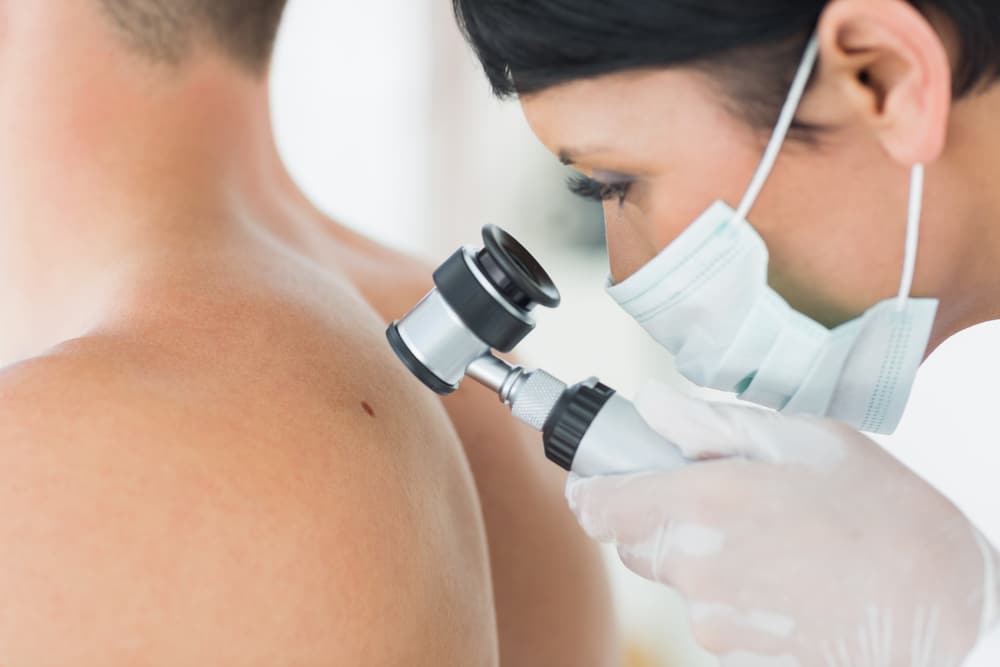Have you ever looked in the mirror and noticed a few moles that weren’t there before? What about a mole that has been there your entire life, but seems to have changed somehow? Maybe you’re wondering whether it’s a good idea to get them checked out or not. It absolutely is. Even if you don’t notice anything at all, it’s a good idea to get your moles checked yearly. Working together, you and your dermatologist will vigilantly seek out and monitor any atypical moles.
What is the Difference Between a Mole and an Atypical Mole?
If you’re wondering about atypical moles, also called dysplastic nevi, you aren’t alone. An atypical mole is a mole that, while most often harmless, exhibits some unusual or irregular features. Namely, it can be a mole that is:
- Larger than the size of a pencil eraser (>6 millimeters)
- Asymmetrical, with uneven, jagged, or crooked borders
- Varied with colors-brown, dark brown, or pink
- Changing in any way
These moles need to be monitored by your physician and sometimes biopsied or excised. Atypical moles are one risk factor for the development of melanoma. Sometimes, these moles can even evolve into cancerous melanoma.
Why Patients Should Have Their Moles Checked
While self-examinations are important, there are large parts of your body that you can’t see yourself. You should learn the ABCDEs of melanoma detection to better spot a concern. . Evaluating a mole, however, can sometimes be tricky. You might not have a perfect recollection of the history of a mole when evaluating change, or you might not know what exactly qualifies as asymmetrical. Having a set of professional eyes to guide you goes a long way.
There’s another advantage of seeing a dermatologist. The use of an instrument called a dermatoscope can make things a lot clearer for both you and your doctor. Your dermatologist will use the dermatoscope, which is sort of like a special magnifying glass that reaches deeper into the skin than the naked eye, to evaluate your mole for signs of cancerous changes.
How Often Should Patients Come In
This is best worked out between you and your doctor, but as a general rule, patients at low risk want to come in for a full-body mole examination at least once a year. You should also come in immediately if you notice a mole that’s hurting, itching, bleeding, or changing. If you notice any new moles that show atypical features, you should also call your dermatologist and schedule an appointment.
If you’re ever unsure, it’s best to err on the side of caution and get things checked out. While most moles are harmless, the risk of melanoma is significant enough to warrant a little extra care.
Schedule Your Consultation
If you’re overdue for a mole check, schedule an exam with our dermatology providers at HMGS Dermatology. You can reach our Marlton, N.J. office at (856) 452-8586 or our Camden, N.J. office at (856) 644-6678. You can also schedule an appointment online by filling out our contact form.
